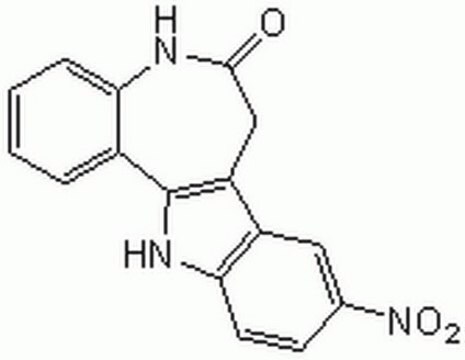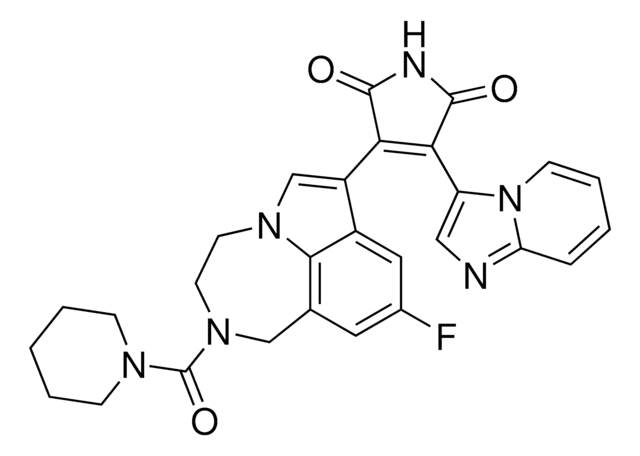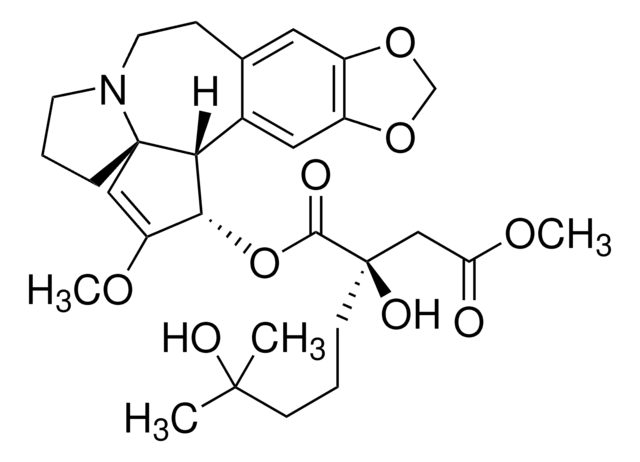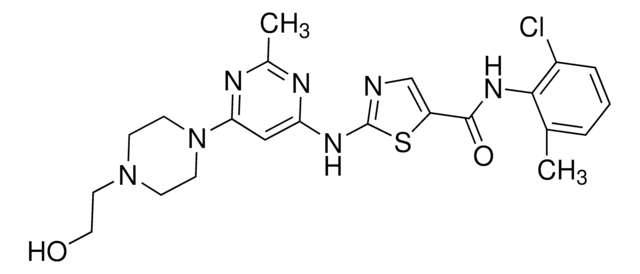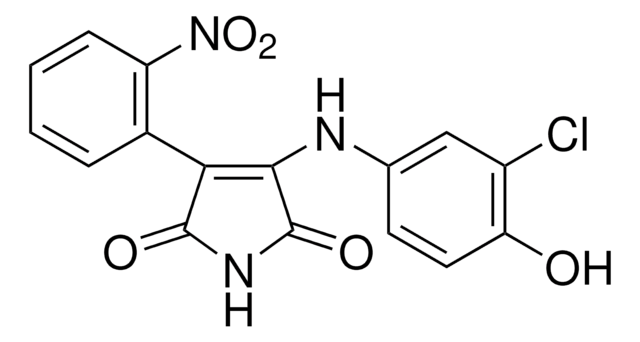Kluczowe dokumenty
A4847
Alsterpaullone
≥98% (HPLC), powder
Synonim(y):
9-Nitro-7,12-dihydroindolo-[3,2-d][1]benzazepin-6(5)-one
About This Item
Polecane produkty
Poziom jakości
Próba
≥98% (HPLC)
Formularz
powder
warunki przechowywania
desiccated
kolor
yellow to brown
rozpuszczalność
DMSO: ≥10 mg/mL
temp. przechowywania
2-8°C
ciąg SMILES
[O-][N+](=O)c1ccc2[nH]c-3c(CC(=O)Nc4ccccc-34)c2c1
InChI
1S/C16H11N3O3/c20-15-8-12-11-7-9(19(21)22)5-6-14(11)18-16(12)10-3-1-2-4-13(10)17-15/h1-7,18H,8H2,(H,17,20)
Klucz InChI
OLUKILHGKRVDCT-UHFFFAOYSA-N
informacje o genach
rat ... Gsk3b(84027)
Zastosowanie
Działania biochem./fizjol.
Cechy i korzyści
Kod klasy składowania
11 - Combustible Solids
Klasa zagrożenia wodnego (WGK)
WGK 3
Temperatura zapłonu (°F)
Not applicable
Temperatura zapłonu (°C)
Not applicable
Środki ochrony indywidualnej
dust mask type N95 (US), Eyeshields, Gloves
Wybierz jedną z najnowszych wersji:
Masz już ten produkt?
Dokumenty związane z niedawno zakupionymi produktami zostały zamieszczone w Bibliotece dokumentów.
Nasz zespół naukowców ma doświadczenie we wszystkich obszarach badań, w tym w naukach przyrodniczych, materiałoznawstwie, syntezie chemicznej, chromatografii, analityce i wielu innych dziedzinach.
Skontaktuj się z zespołem ds. pomocy technicznej